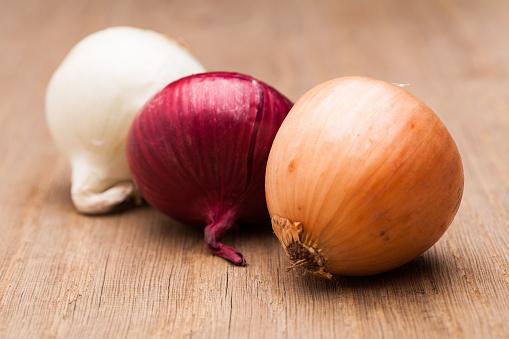
How to Grow & Harvest: Yellow Onion
Onions are an extremely hardy vegetable to plant in your garden, if taken care of correctly they will quickly supply you with an abundance. What is the benefit to eating onions? They boost your immune system, regulate your blood sugar levels and can also help to control your cholesterol levels.
Growing:
If you have it available to you, onions tend to flourish when grown in raised garden beds. Be sure to choose an area that will receive full sunlight daily, and where the soil is aerated. It is important to plant where the soil is not too dense because this can hinder the growth size of the bulbs. A great addition to the soil to ensure large bulbs is to add soil fertilizer once every few weeks, onions require a high level of nutrients to form properly. We suggest providing nitrogen rich fertilizer such as the one we sell HERE, one week after planting, as well as applying it again one month after planting. When weeding onions, do not till the soil or dig deep into the soil to remove the weeds roots. Simply use your fingers to grip the weed and pull it from the soil. Since onions have a shallow root system they can easily be damaged.
Watering:
Generally speaking, onions do not need to be watered consistently if you are able to use a light layer of much around the tops of the plants. A rule of thumb, is the more you water, the sweeter your onions will get. The onion can also be deceiving, because it will continue to look healthy even when it isn't. Be sure to still water regularly, giving the crop at least 1 inch of water every 2 weeks.
Pests/Diseases:
Generally speaking, onions are usually able to survive a growth season without any issues with insects or disease. One of the best ways to prevent getting disease on your onions is to practice crop rotation, ensuring you are not planting the onions in the same garden spot every year.
Thrips: These bugs are the size of a sewing needle and very hard to detect. Their beige bodies are easily found if you tap the leaves onto a dark piece of fabric or paper. You can reduce your chances of Thrips by keeping the garden clean and free of weeds.
Onion maggots: These bugs like to lay their eggs at the base of the onion stem right against the soil. To avoid these, remove the mulch that you may have placed around the plant. It is important not to overwhelm the onions with mulch because these onion maggots love decaying matter and will gladly chomp on your onions. These maggots typically also only come about in the rainy season when it has been consistently wet outside, they are less of a concern in the high heat. You can also put a light dusting of sand at the base of your onion plants to discourage the insects from laying their eggs there.
Another great way to reduce the chances of disease is to inter plant the onions throughout your garden.
Harvesting:
Typically, onions are harvested in the fall as they can withstand cooler temperatures than most other crops. Pull onions that have flowered at the top, if a flower forms it is an indication that the onion has stopped growing and should be used within a few days as it wont keep well. Once the green tops start to yellow and bend, that means they are close to being ready as well. The best method to ensure the onion is fully formed and juicy before pulling it from the ground is to stomp these yellow bent tops down, to prevent the plant from sending more energy to that area, and instead sending that energy into the onion bulb. The next step is to loosen the soil around the onion bulb to promote drying, and when the tops are brown, pull the onions.
Have you ever made home made french onion soup? It can be an extremely simple, and very delicious option for you to cook your onions with!